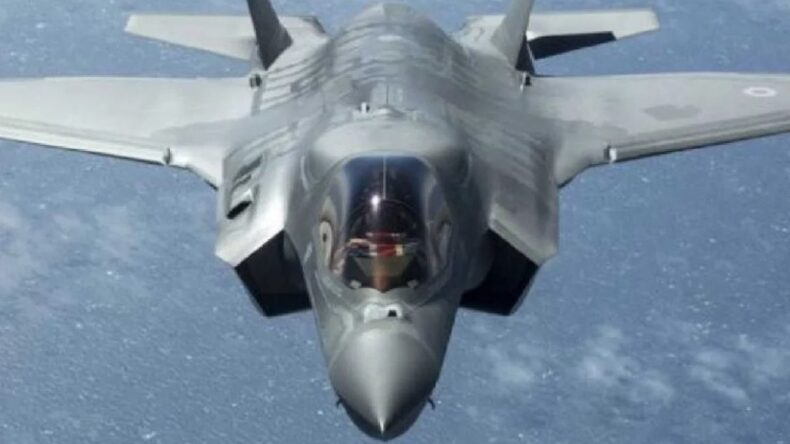In a rather unusual turn of events, the United States found itself in a perplexing situation when an F-35 fighter jet went missing over North Charleston, South Carolina. The incident unfolded after the pilot safely ejected from the multimillion-dollar aircraft following a mishap. Manufactured by Lockheed Martin, the F-35 is known for its advanced capabilities, boasting a price tag of around $80 million, the ability to carry a payload of four heavy weapons, and a top speed of Mach 1.6.
The disappearance of such a technologically advanced and costly military asset has raised eyebrows not just within the military community but also among the general public. The authorities’ response to this incident, urging locals to assist in the search for the missing fighter jet, has led to both criticism and questions surrounding the circumstances of the pilot’s ejection and the aircraft’s tracking capabilities.
The Ejection Mystery
The most pressing question on everyone’s mind is why the F-35 pilot chose to eject from the aircraft. Ejecting from a multimillion-dollar plane is not a decision taken lightly, and it typically occurs when there is a critical malfunction or a situation that endangers the pilot’s life. The US official’s statement confirming the safe ejection after a mishap offers little insight into the specifics of the incident, leaving room for speculation.
In situations like this, transparency is crucial. The public and even military experts deserve a more detailed account of what went wrong with this advanced fighter jet. Was it a technical malfunction, human error, or an external factor that prompted the ejection? These questions need to be addressed to ensure the safety and reliability of such high-value assets in the future.
The Search Efforts
Following the ejection of the pilot, Joint Base Charleston authorities launched an extensive search operation to locate the missing F-35 fighter jet. Collaborating with federal aviation regulators, the search effort extended to areas around two lakes and other regions north of Charleston. The disappearance of a high-profile military aircraft naturally triggered a sense of urgency, with the military keen on recovering the aircraft as quickly as possible.
However, what raises eyebrows is the decision to involve the general public in the search. The Joint Base Charleston took to social media, urging locals to provide any information that could assist in locating the F-35. While community involvement can be helpful in certain situations, it is unusual, if not unprecedented, to ask civilians to assist in the recovery of a multimillion-dollar military asset.
The Tracking Dilemma
One of the most bewildering aspects of this incident is the apparent lack of a tracking device or system for the F-35 fighter jet. In an age where consumer technology allows us to track our smartphones, cars, and even household appliances, it is surprising that such a cutting-edge military aircraft does not have a robust tracking mechanism.
Congresswoman Nancy Mace’s reaction on social media encapsulates the sentiment of many when she questioned how an F-35 could be lost in the first place. Her statement highlights the public’s disbelief that a state-of-the-art fighter jet, with all its advanced technology, could seemingly vanish without a trace.
The Need for Accountability
In the aftermath of this incident, there is a pressing need for accountability and transparency from the US military and the manufacturers of the F-35 fighter jet. The taxpayers, who fund these multimillion-dollar defense projects, deserve clear explanations regarding the circumstances that led to the disappearance of such a valuable asset.
Additionally, it is imperative that lessons are learned from this incident to prevent similar occurrences in the future. This includes reevaluating the tracking systems in place for military aircraft and ensuring that pilot ejections are thoroughly investigated to prevent unnecessary risks.
Conclusion
The disappearance of an F-35 fighter jet over North Charleston has left many puzzled and concerned. While the pilot’s safe ejection is a relief, the circumstances leading up to it remain shrouded in mystery. The involvement of the public in the search for the missing aircraft has sparked controversy, raising questions about the adequacy of tracking systems for advanced military assets.
Moving forward, there is a need for transparency, accountability, and a thorough investigation into the incident. The F-35 program is a significant investment for the United States, and incidents like this should serve as a catalyst for improvements in safety measures and tracking technology to ensure the security and reliability of such advanced military assets.
The incident involving the missing F-35 fighter jet underscores the importance of maintaining a robust and comprehensive security infrastructure around sensitive military assets. While details about the incident remain scarce, it is crucial for the military to revisit its protocols for safeguarding and tracking advanced aircraft like the F-35. This incident also highlights the need for continuous training and preparedness for pilots to handle emergencies effectively, even if they involve ejecting from a state-of-the-art fighter jet.
Moreover, it is essential for the military and the defense industry to assess the potential vulnerabilities that might be exploited in situations like this. As technology continues to advance, the security and tracking systems of military assets must evolve to stay ahead of potential threats, whether they be technical malfunctions, cyberattacks, or other unforeseen challenges.
In conclusion, the disappearance of the F-35 fighter jet in South Carolina serves as a wake-up call for the United States military and the defense industry as a whole. It prompts a reevaluation of tracking systems, transparency in incident reporting, and the need for a proactive approach to security and safety. Ultimately, the public and the armed forces deserve the reassurance that the nation’s most advanced military assets are not just cutting-edge but also well-protected and accounted for, even in the face of unexpected events.













